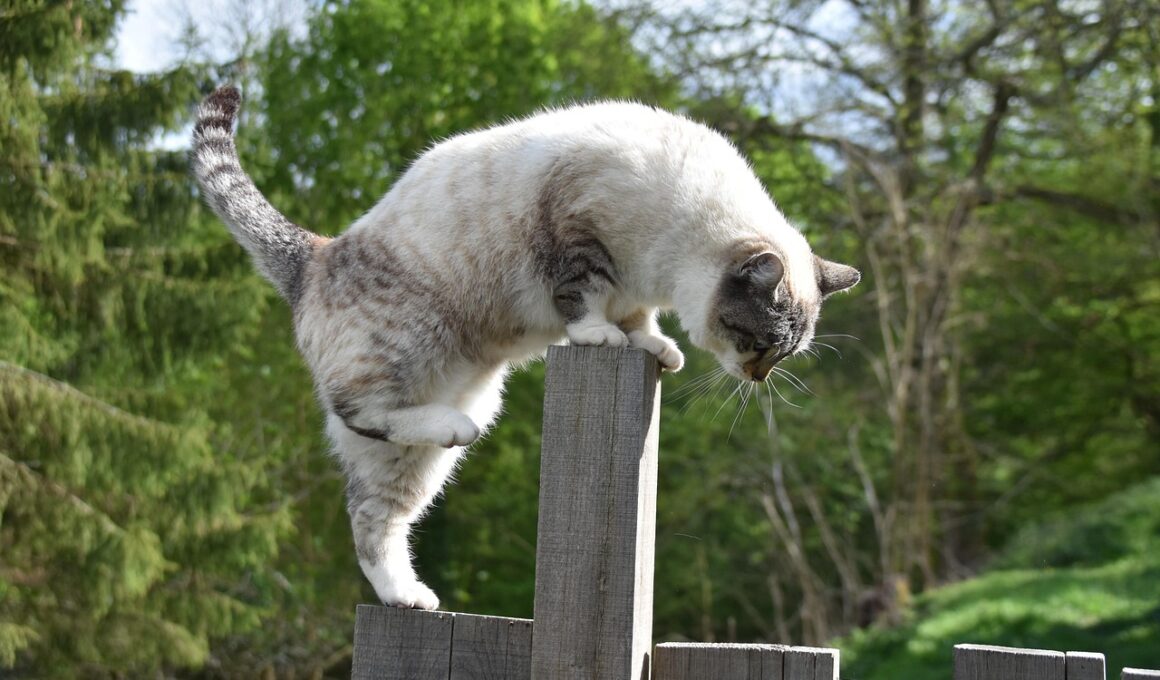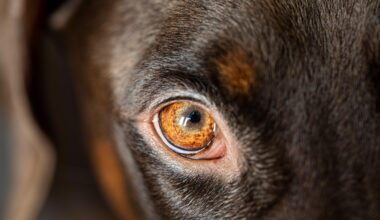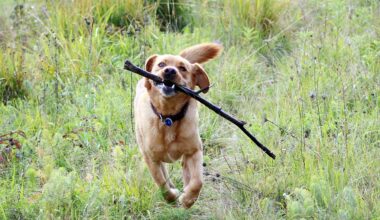Ethical Concerns Surrounding Professional Cat Agility Competitions
The world of professional cat agility competitions has grown rapidly, attracting attention from animal lovers and sports enthusiasts alike. However, hidden controversies complicate the celebration of these events. While many admire the skill and dexterity displayed by participating felines, ethical concerns regarding their treatment and training methods cannot be ignored. Ensuring that the well-being of the cats remains a priority is crucial for fostering a positive environment in this niche sport. These competitions often highlight the innate abilities of cats, yet they require rigorous training and commitment. Training techniques vary widely, some fostering positive reinforcement while others may resort to harsher methods. To prioritize the cats’ welfare, organizations need strict guidelines to ensure humane treatment. Such regulations must cover the training process and the overall environment in which competitions occur. Additionally, the role of the owners cannot be overlooked; they are responsible for their cats’ welfare and have a duty to ensure their pets remain healthy and happy. The public must be informed about these issues to create a culture of responsible cat ownership and treatment.
Furthermore, a critical aspect of the ethical framework in professional cat agility competitions revolves around the psychological impact on cats. Unlike dogs, cats are notoriously independent animals with strong willpower. Forcing a cat into rigorous training or competitive settings can lead to stress and anxiety. Understanding animal behavior is vital in creating an enjoyable experience for both the pets and their human partners. Competitors may succeed in teaching their cats tricks and obstacle navigation, yet they risk jeopardizing the emotional health of their animals through undue pressure. Ensuring well-balanced training that respects a cat’s natural instincts is necessary for sustainable enjoyment in agility sports. Engaging in gentle, patience-centered training practices rewards both cats and owners alike. Owners and trainers must maintain open, transparent communication, utilizing positive reinforcements that focus on the cat’s strengths. Acknowledging when a cat is not receptive or willing to participate in training ensures a healthy relationship devoid of negative experiences. Ultimately, promoting understanding and empathy towards the feline competitors benefits everyone involved, including spectators, who can appreciate a well-adjusted and happy participant.
Recognizing Cat Rights in Competitions
Additionally, recognizing and advocating for cat rights plays an essential role in the conversation surrounding legal and ethical considerations within professional cat agility competitions. Just as we uphold the rights of other animals, including dogs and horses, cats deserve equal consideration as intelligent, sentient beings. In many countries, specific laws govern the treatment of animals in competitive settings. However, loopholes and inadequacies often leave cats vulnerable to neglect or inappropriate training practices. Advocates argue that striking a balance between entertainment and ethical treatment requires comprehensive regulations tailored to the needs of feline participants. Stakeholders, including event organizers and pet owners, must collaborate to develop guidelines that uphold the rights of cats while promoting their welfare. Creating organizations dedicated to overseeing cat agility competitions can enhance monitoring for best practices among participants. These groups should focus on educating owners, coaches, and judges about ethical standards vital to the sport’s future. By actively engaging in advocacy, venue management can help reshape perceptions of cat sports, highlighting their commitment to responsible treatment and long-term commitment to improving conditions.
The impact of public perception cannot be overstated in promoting ethical practices at cat agility competitions. As spectators embrace this unique sport, their feedback influences how competitions and training methods are conducted. The demand for transparency regarding the well-being of competitors can prompt organizations to reevaluate their protocols, ensuring the humane treatment and welfare of the animals involved. Furthermore, event organizers can harness social media platforms to share stories demonstrating the positive impact of responsible cat training and competition experiences. Acknowledging both the joys and challenges faced by feline athletes can humanize their struggles and triumphs, further reinforcing public empathy. When pet owners publicize their commitment to ethical practices, they can inspire others to follow suit, fostering a community that prioritizes animal welfare. Promoting responsible practices will cultivate a culture of respect not just for the cats but also for the sport, attracting a wider audience. Organic success arises from sincere commitment and a shared vision, driving a positive change that affects future generations of feline athletes within the sport.
Addressing Health and Welfare Concerns
Moreover, health and welfare concerns contrast sharply with the excitement and energy of cat agility competitions. Understanding the physical limitations of cats is paramount to ensuring their welfare while participating in these events. Unlike their canine counterparts, cats may not tolerate rigorous physical exertion, which can lead to injuries or stress-related disorders. Competitors must be aware of signs indicating discomfort and fatigue, as pushing them too far could result in serious consequences. Organizers can establish guidelines dictating suitable age and breed considerations, helping to promote health-focused participation. Welfare checks before, during, and after competitions could offer a safeguard against hidden ailments that could compromise a cat’s performance. Implementing mandatory vet assessments could further reassure owners and spectators that the cats engage in these games safely. Ensuring event conditions are optimal, such as providing comfortable resting areas and adequately spaced courses, is essential for reducing stress and anxiety levels. Acknowledging that every cat is unique helps guide trainers in developing appropriate strategies for exercise and engagement while safeguarding their health and overall well-being.
Another significant concern lies in the aftermath of competitions, as the transition from a competitive environment to everyday life can be challenging for some cats. Cats accustomed to the adrenaline of agility competitions may struggle with anxiety and hyperactivity once the excitement subsides. Owners must adopt strategies to help their feline friends reintegrate into normal life patterns, allowing for necessary adjustments, such as incorporating mental stimulation and playtime. Socialization with other pets can provide additional support and ease the transition, lessening potential behavioral issues. Utilizing channels like training classes or cooperative play with other cats can help alleviate these problems, ensuring a smooth evolution back to their regular environments. Acknowledging this adjustment period fosters supportive relationships between owners and their pets, enhancing the overall experience for both parties. Establishing a plan for transitioning from competition to relaxation reinforces the bond shared between cat and owner. Ultimately, creating a positive competition experience enhances both the mental and physical health of the feline participants and promotes responsible cat ownership.
The Future of Ethical Cat Sports
In summary, the future of professional cat agility competitions necessitates embracing a strong ethical framework that prioritizes the health and welfare of the feline athletes. Stakeholders must consistently advocate for the ethical treatment of all animals involved in these events, recognizing their unique needs and perspectives. Open discussions surrounding welfare practices will lead to a better understanding of how to create an environment that nurtures both cats and their owners. As awareness grows, so too does the need for effective regulations aimed at safeguarding cat welfare within competitive sports. Creating robust partnerships among event organizers, pet owners, and animal welfare organizations can significantly contribute to establishing industry-wide standards. Encouraging transparency and accessibility surrounding training methods and conditions encourages proper compliance and inspires confidence in participants. Ultimately, the collective commitment to a more ethical approach to cat sports benefits everyone, reinforcing the mission of making professional cat agility competitions remark as positive celebratory occasions for all involved. With a unified vision, the future can showcase improved practices ensuring every cat can thrive and enjoy their time in the spotlight.
Ultimately, the transformation needed in professional cat agility competitions revolves around education and awareness as collaborative efforts emerge to advocate for change. Public engagements, such as workshops or seminars, can raise awareness and educate participants on the ethical implications of the sport. Educating current and future owners about the responsibilities associated with cat agility inspires a culture of respect and empathy. Collaborative networks can help reinforce positive practices across regions and organizations while also providing resources for improvement. As these communities develop, stakeholders must remain vigilant regarding unethical practices that may arise. Social media can amplify positive messaging and promote best practices while discouraging mistreatments. By focusing on ethical standards, pet owners can foster a culture that benefits everyone involved in the world of cat sports. Without a doubt, every effort counts in reshaping how society perceives the role of our beloved companions in sports competitions. Through conscious consumerism and public accountability, everyone can shape a healthier, happier future for competitive cats, ensuring an environment where they can flourish and thrive through the fun and challenges of agility training and competitions.


